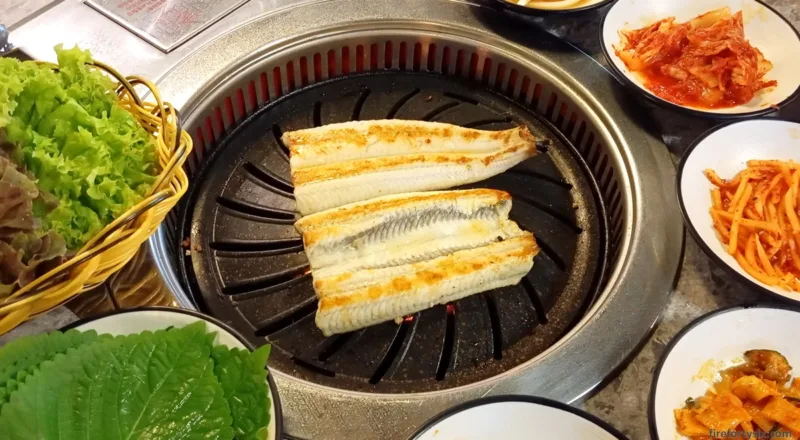Eels are delicious.
Which is probably how they ended up on the IUCN Red List as an endangered species in 2014. The last time I checked, they’re still there.

Does that make us feel guilty when we eat them? Maybe a little. Will it make us stop consuming them completely? Definitely not.
In fact, it’s quite the opposite. We plan to have as much of them as possible, before they go extinct. Sorry, not sorry.
We’ve eaten many eels in many different countries. Most of the time, they’re cooked kabayaki-style: filleted, marinated in sweet soya sauce and grilled over a charcoal fire.
Sometimes, they’re served as hamo sashimi, after blowtorching the skin and skillfully breaking the fine bones. But we’ve never had them unmarinated and grilled as-is. That is, until a couple of months ago.
As The Wife was scrolling through her Facebook feed, she noticed that Pohang Seafood & Butchery was running a Korean eel BBQ promotion.
They would be shipping in a tonne of eels from Korea, and offering customers unlimited servings for S$48++ (Mon-Thu) per person and S$52++ (Fri-Sun & Holidays).
When I say a tonne, I don’t mean figuratively like a big bunch of eels. I mean it literally, like one metric tonne or 1,000 kilogrammes of Anguilla Japonica.
To put it in context, that’s equivalent to about 30 Moo Dengs. Yes, I confess, I’ve been watching way too many videos of Thailand’s favourite baby pygmy hippo.
1,000kg seems like a lot of eel, but the promotion is available only “while stocks last” and we didn’t want to risk missing out. So off we went to Aperia Mall on a weekday afternoon.
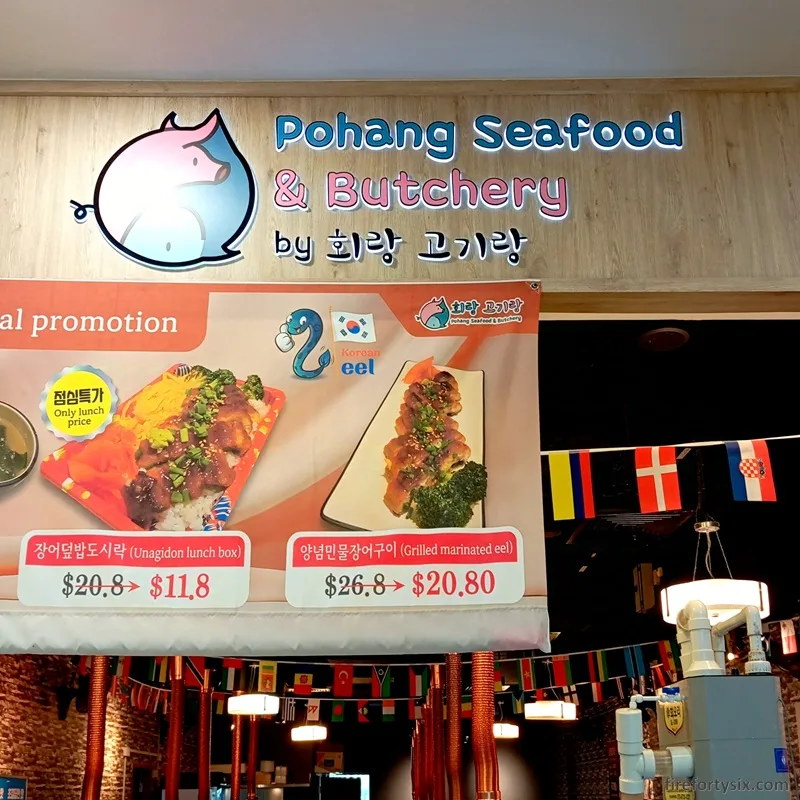
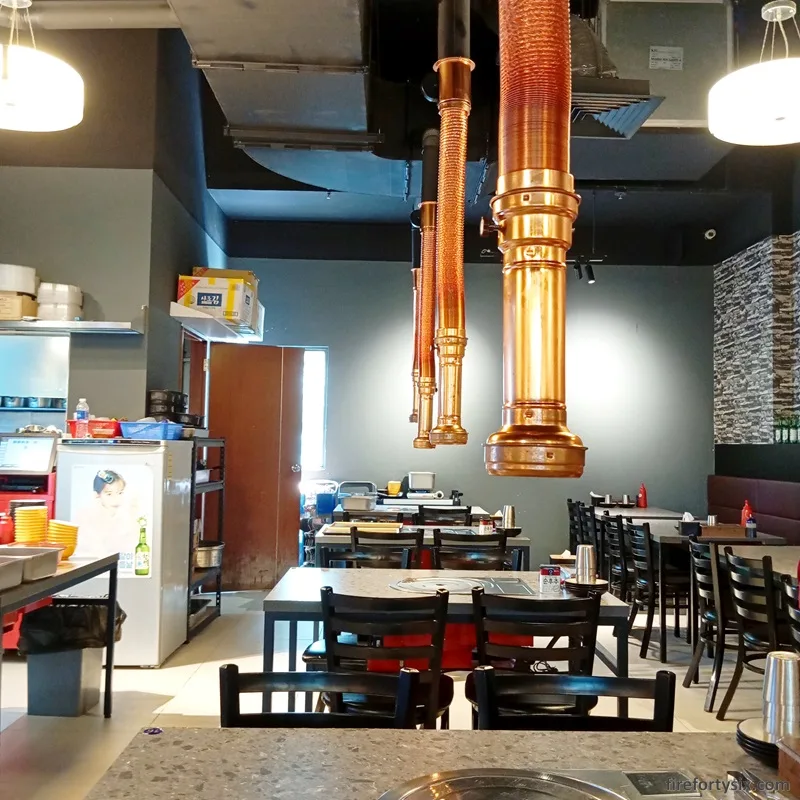
Pohang Seafood has been on our radar for quite some time now, but there hadn’t been any compelling reason for us to take the 50 minute bus ride.
Especially since we’ve started travelling overseas again, and had already made plans to visit South Korea again later this year.
After all, Korean food is best enjoyed in Korea itself, where ingredients are fresher and the prices cheaper. But the idea of bottomless eel for two hours was just too compelling to pass up.
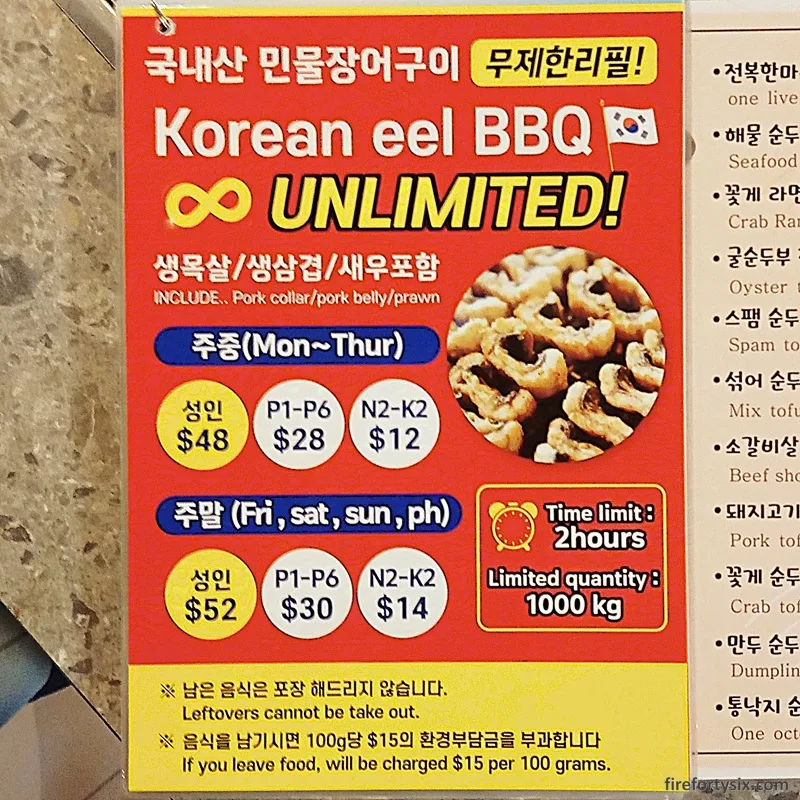
The restaurant was empty when we reached, so we were seated immediately.
Ordering was straightforward. All we had to do was to point at the promotional offer, and indicate that it was for the both of us.
Almost immediately after we ordered, the condiments arrived. Four different sauces, raw garlic cloves, thick cut green chillies, long shreds of young ginger, an onion/chive soya sauce and a big basket of vegetables leaves.
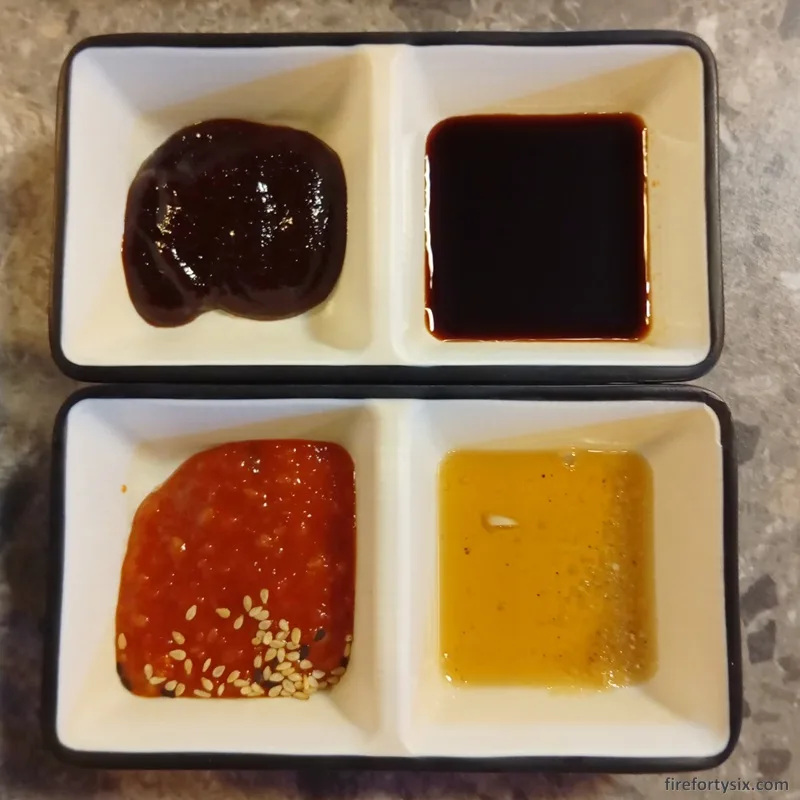
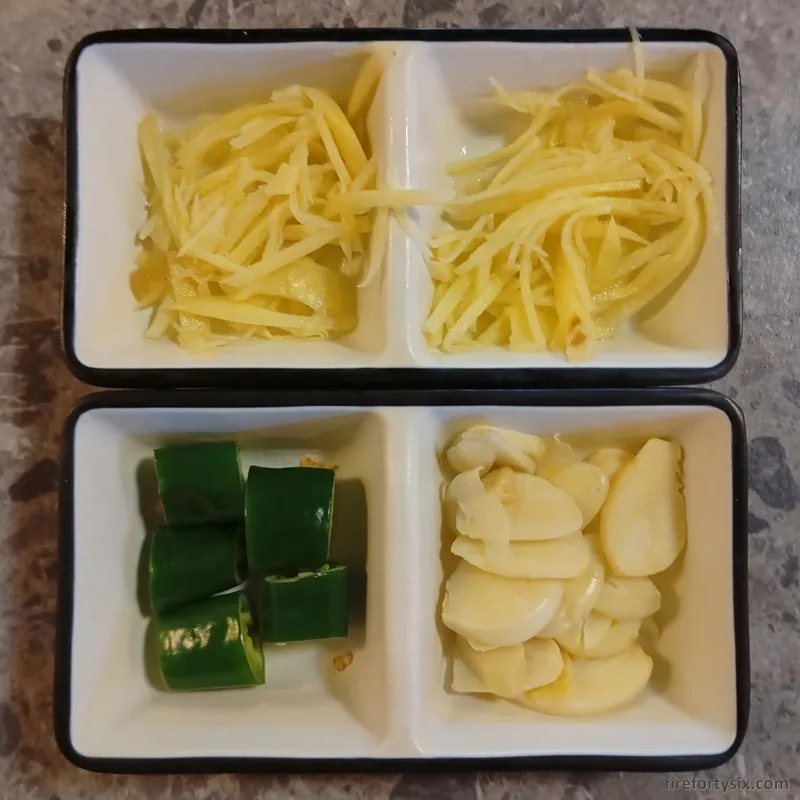
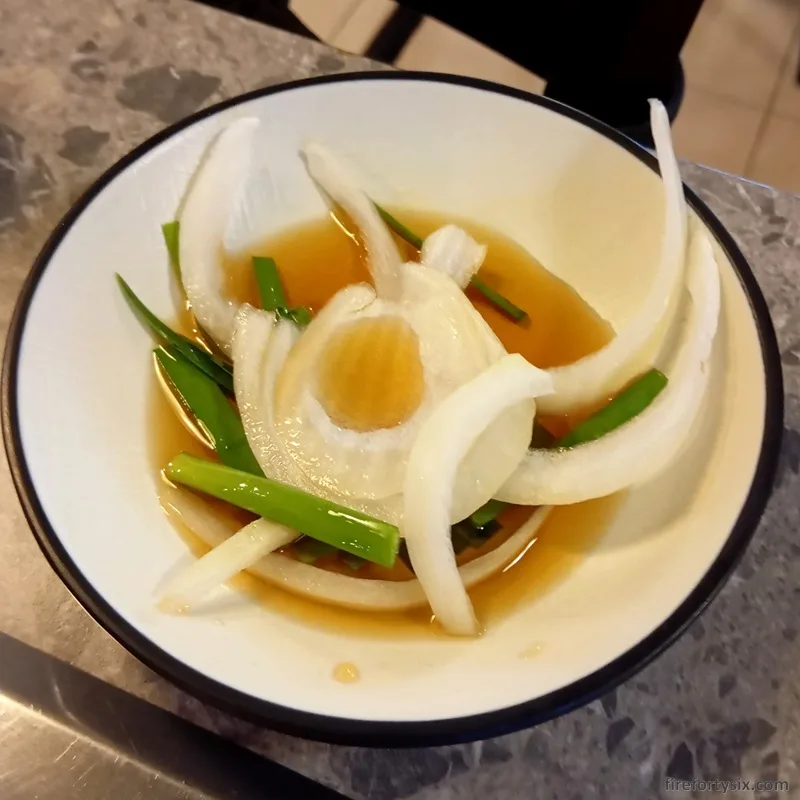

The Wife’s eagle eyes spotted her favourite leaves tucked away in one corner of the basket. It was a surprising find, because while kkaennip is commonplace in Seoul, you hardly see it in Singapore.
Maybe because locals are unfamiliar with the taste, but most likely due to the high cost of procuring fresh supplies.
The ones we’ve seen here are priced at S$5.00 for a small packet of limp and lifeless leaves. Unlike those in Korean markets, where the same amount of fresh and vibrant leaves could be had for one-fifth the price.
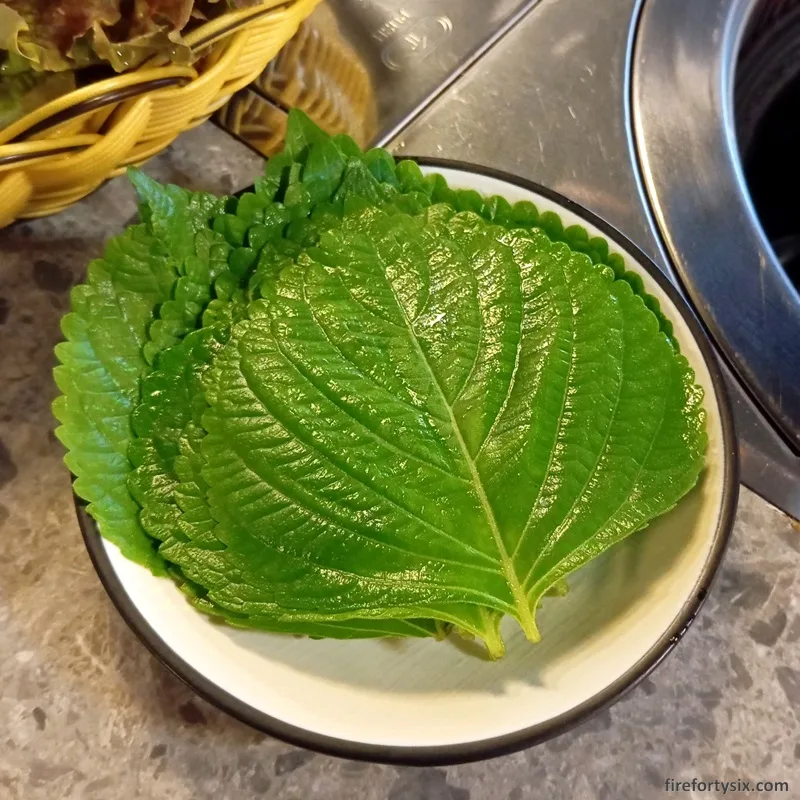
The ones at Pohang Seafood looked just as pretty, prompting The Wife to try her luck in asking for more. Our waitress didn’t hesistate and quickly returned with a generous stack.
But that wasn’t all that she came back with. Because this was a Korean restaurant after all, and Korean restaurants are known for serving complimentary side dishes, or banchan.
What we got weren’t particularly special, but they were spicy and tasty: cucumber, radish, kimchi (of course) and eomuk. Nice to snack on while waiting for our main course to be served.
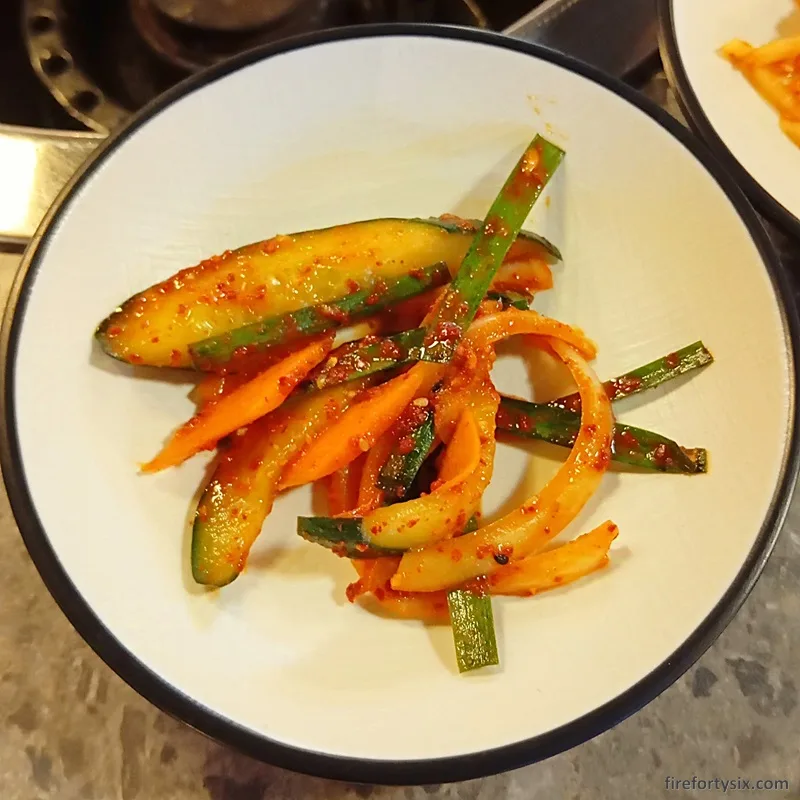
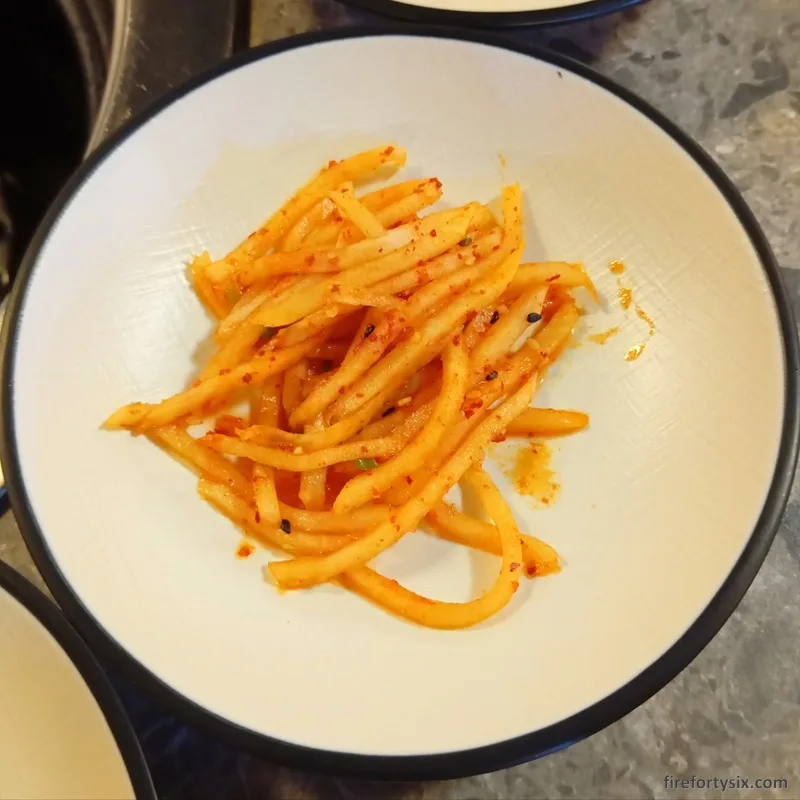
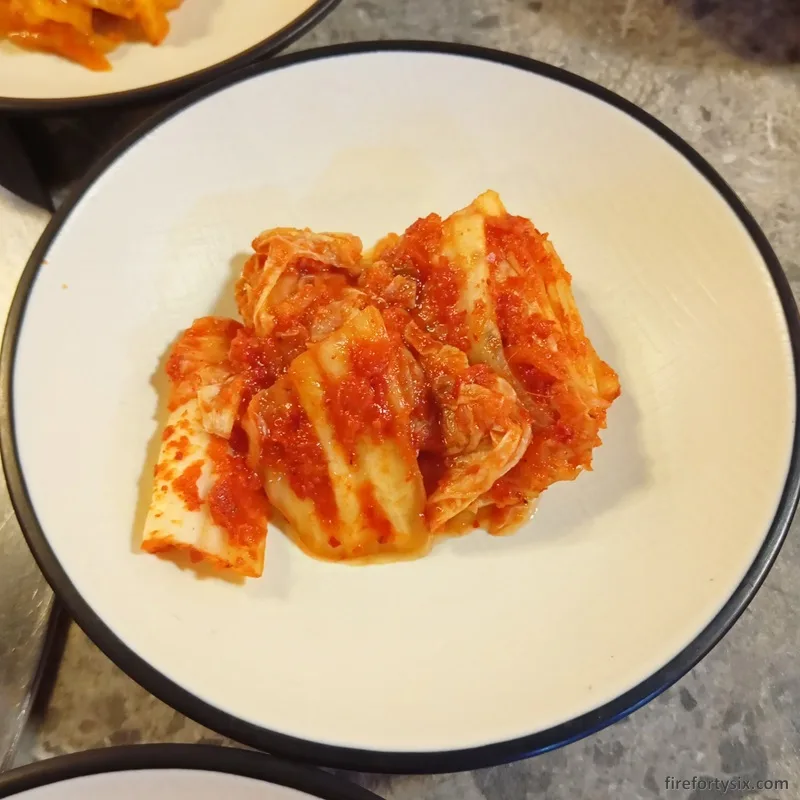
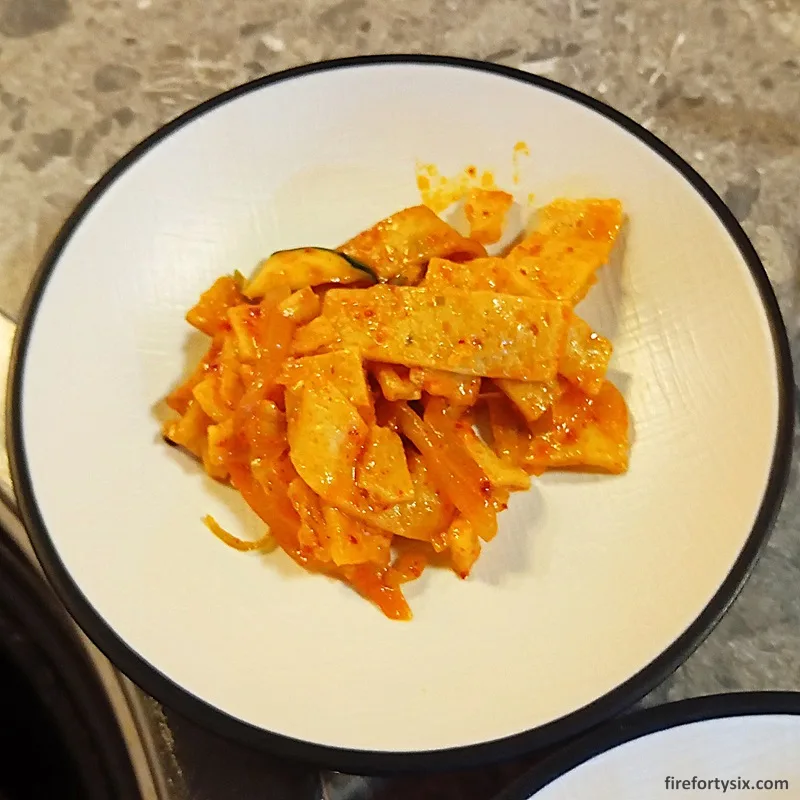
Our first portion of eel was big and meaty. An entire fish was butterflied, filleted, cut into two pieces and sprinkled with a pinch of salt.
No other seasoning or marinade was used, providing us the opportunity to fully experience the original, unadulterated flavour of freshly-grilled eel.
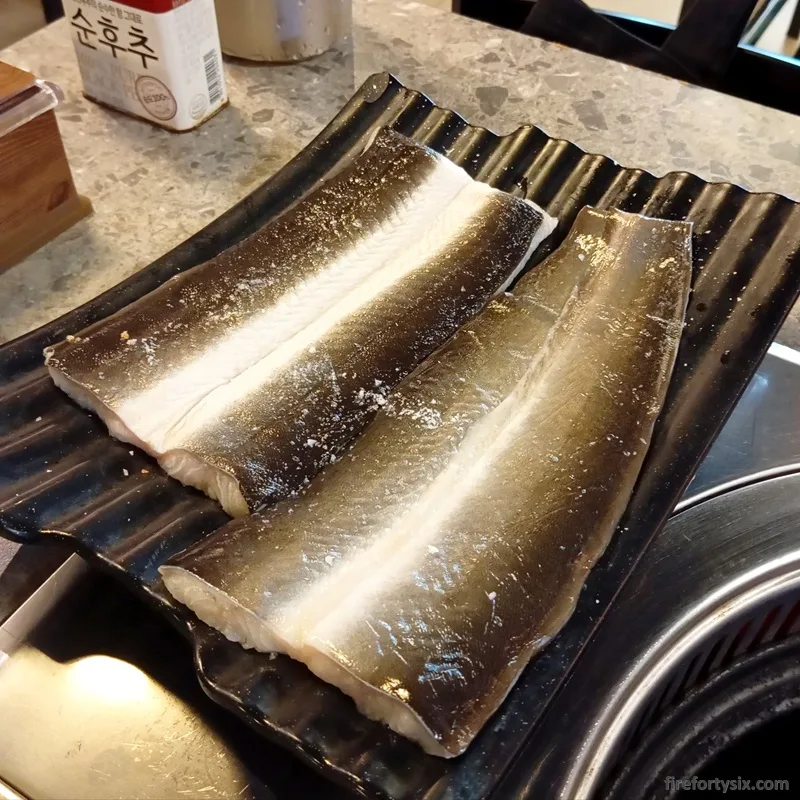
Red-hot charcoal was brought out from the kitchen and carefully placed into the recessed grill in our table. We were quite mesmerised by the colours and flickering flames of the burning coal.
They were then covered by a heavy, well-worn and slightly curved metal plate which only took a few minutes to come up to temperature.
Once it was suitably hot, our tableside cooking service commenced.
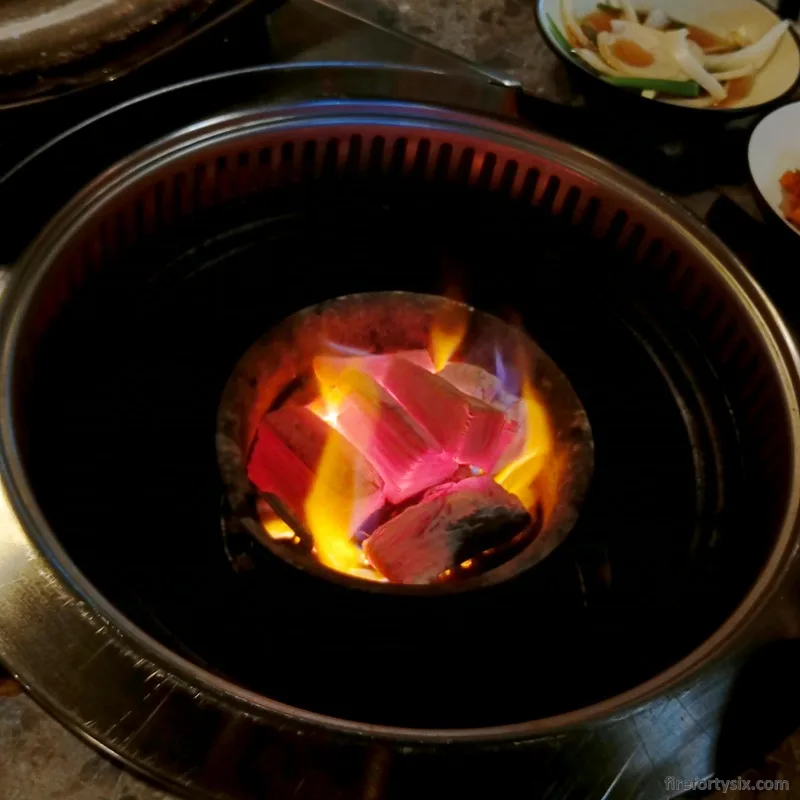
First, both fillets were placed skin side down to crisp up the skin. Then, they were flipped over to continue cooking the flesh.
After they were about halfway done, our waitress used tongs to pick up one fillet and skillfully cut it up into bite-sized pieces with a pair of scissors.
Each morsel was propped up on its side, and subsequently flipped to cook both ends of the cross-section. The process was repeated for the other fillet.
A beautiful brown crust developed as the pieces of eel patiently sat on the grill. The overhead suction tube vacuumed away the smoke, but allowed the delicious BBQ fragrance to escape.
“You can start eating now,” our waitress declared as she downed tools.
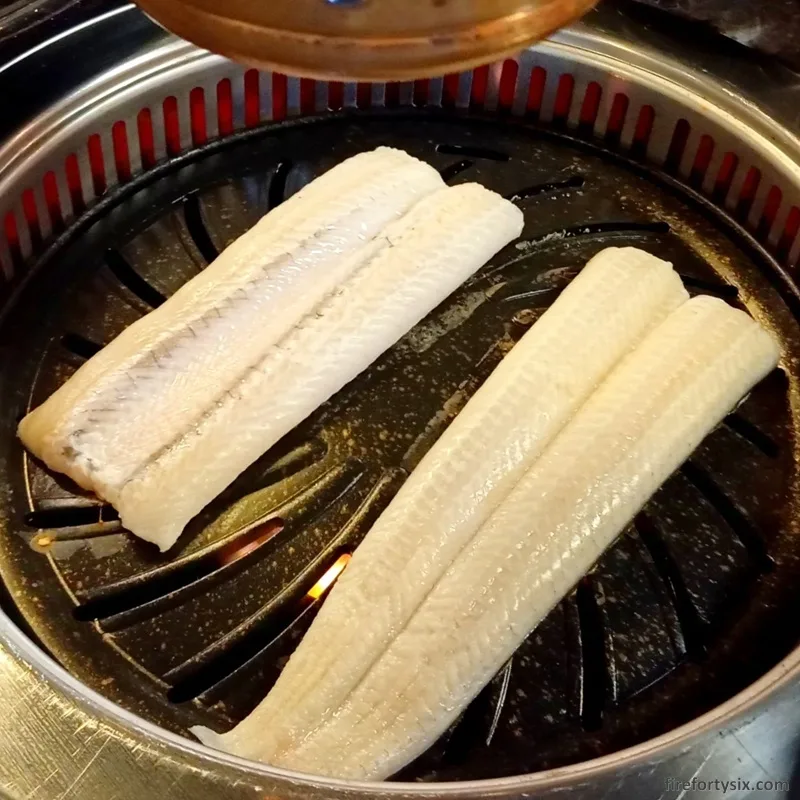

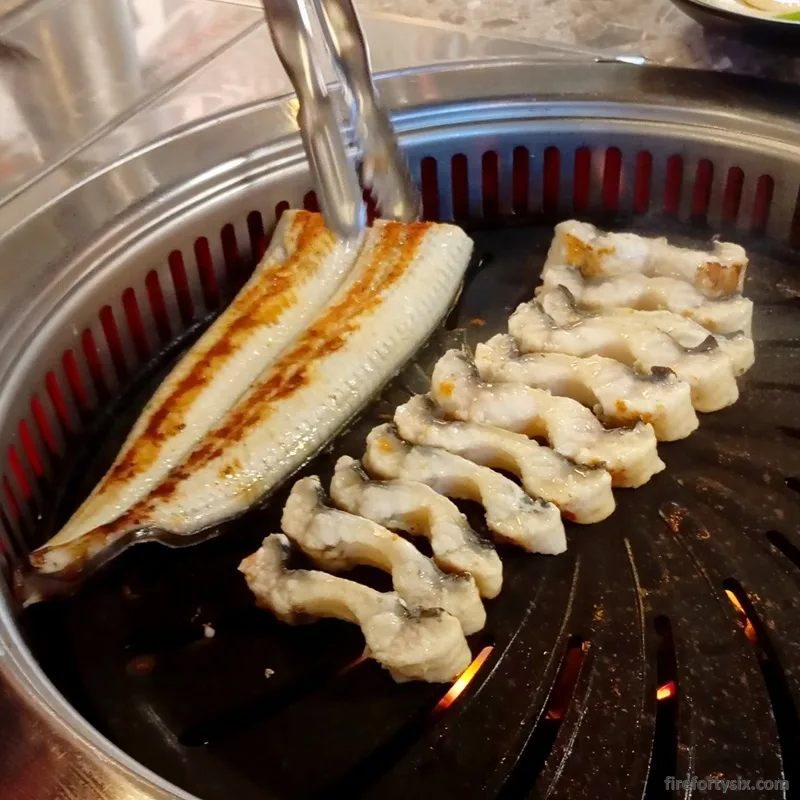
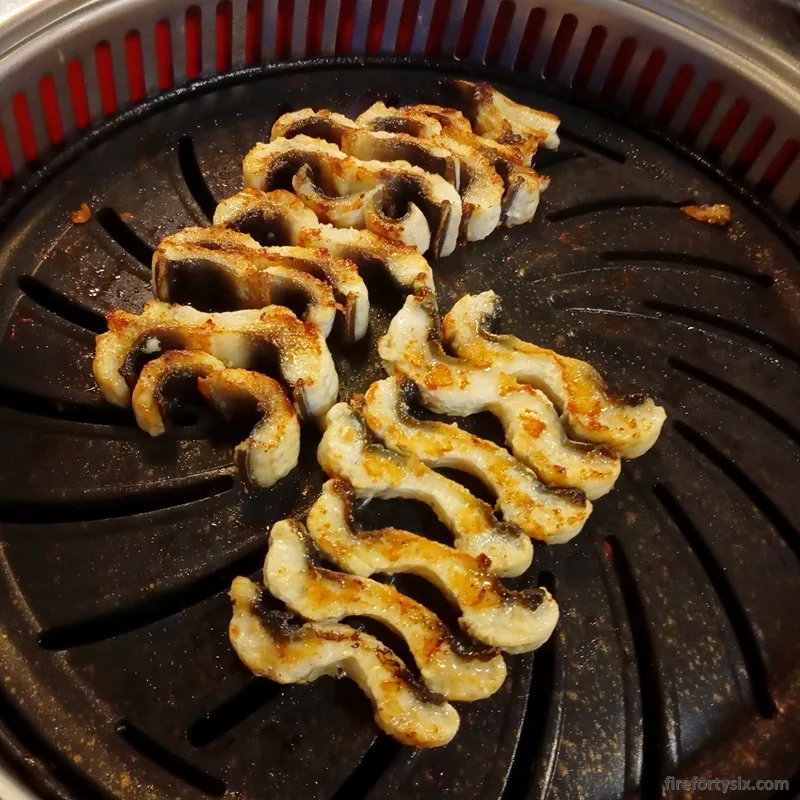
It was not a moment too soon. Our anticipation had been slowly building as we watched her cook, and it was finally time to savour the end product.
Our first bite was as-is; no sauce, no condiments, no vegetable wrapper. From all the eels that we’ve had in the past, we had a good idea of what to expect.
While this had a similar taste profile and texture, it was much cleaner. Eels are generally quite oily, but most of the fat had rendered out, leaving just enough to impart flavour without burdening our palate.
If I had never eaten eel before and had to do a blind taste test, I may not have guessed that this was actually fish. It wasn’t flaky and soft, but was meaty and chewy instead.
It was, as they say in Korea, jinjja mashiso.
After a few more bites of the naked version, we proceeded to pair it with every condiment, sauce and leaf on our table. Starting by assembling a ssam using shredded ginger and fresh kkaennip.

The gentle spiciness from the young ginger, coupled with the unique herbal aroma of the kkaennip paired wonderfully with the rich grilled jangeo-gui.
It sounds clichéd, but it really was a match made in heaven. Throughout the entire lunch, we made so many of this particular ssam and wiped out all the kkaennip.
We also tried out every single sauce that was provided. Starting with sweet tian mian jiang and sesame oil with salt, followed by spicy ssamjang and the familiar unagi sauce.
None of them matched up to the “naked” version or the ginger/kkaennip ssam combo, but the sesame oil with salt came the closest.
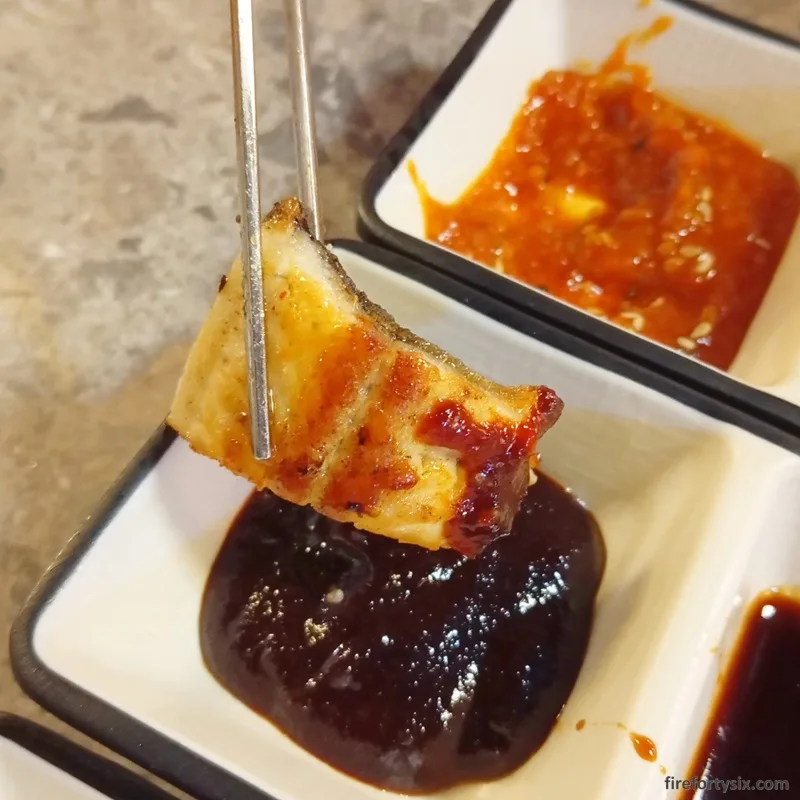
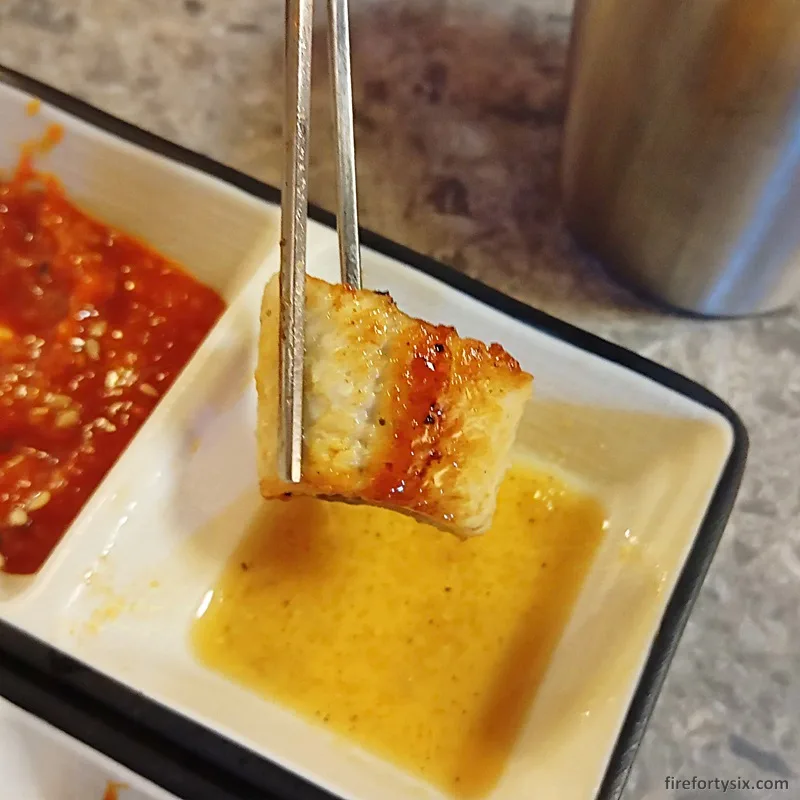
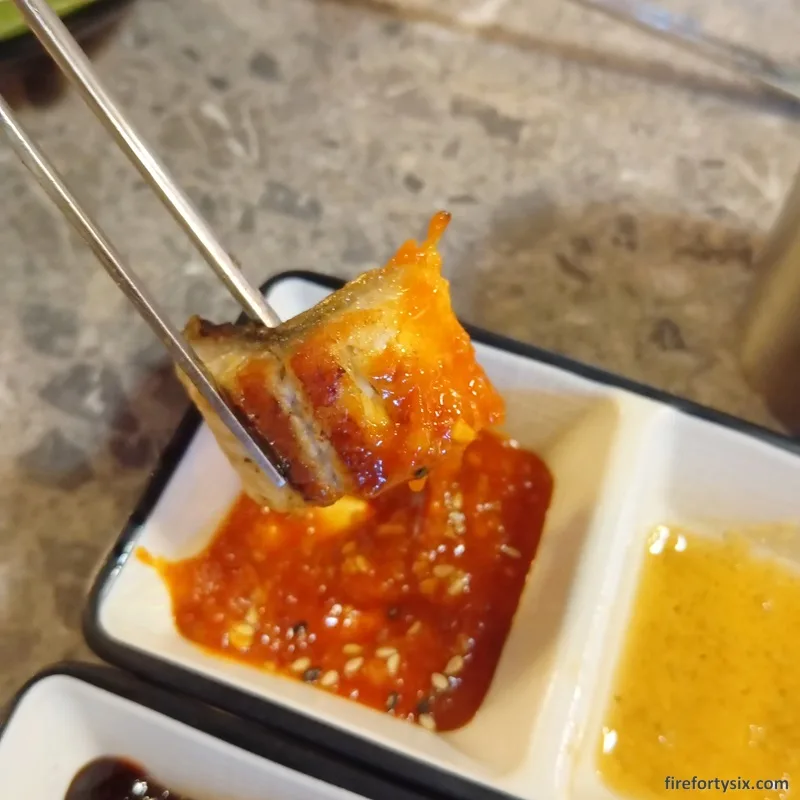
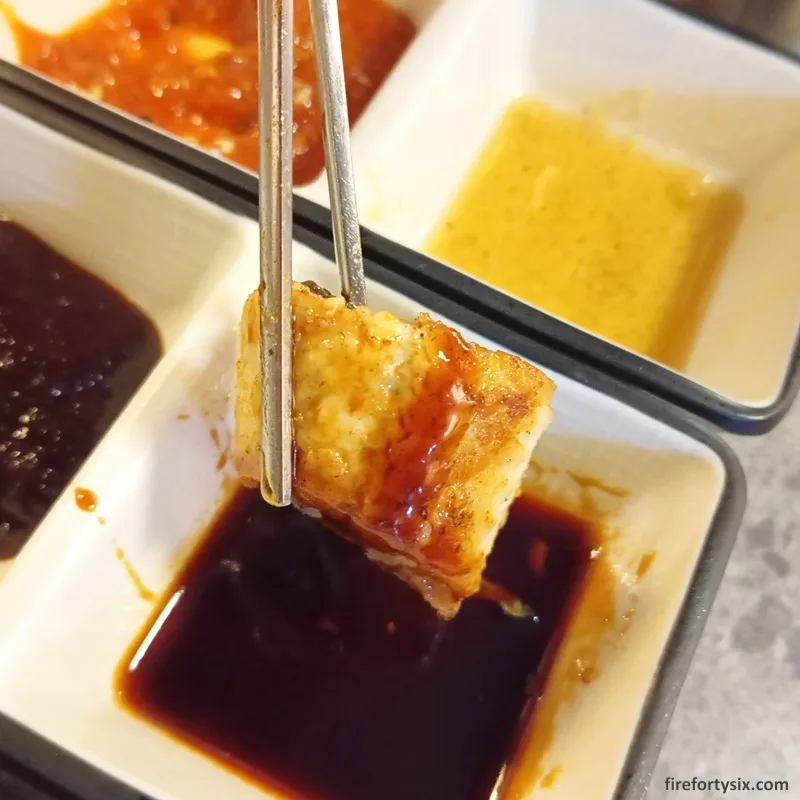
Before we knew it, we had polished off three portions of eel. Our waitress had cooked the first portion, but left us to our own devices for subsequent refills.
Even though we struggled at first during the cutting process, resulting in uneven portions, we eventually got the hang of it on the third try.
Which was when we hit the wall, and the law of diminishing returns kicked in. The idea of an unlimited supply of eel was alluring, but unlike the incomparable Tzuyang, we were only human.
We probably could have squeezed in one more portion, but our tastebuds were getting fatigued from the flavour of eel.
Switching gears, we ordered prawn, pork belly and pork collar to end our meal. All three options were included as part of the promotion, and we requested a small sampler portion.
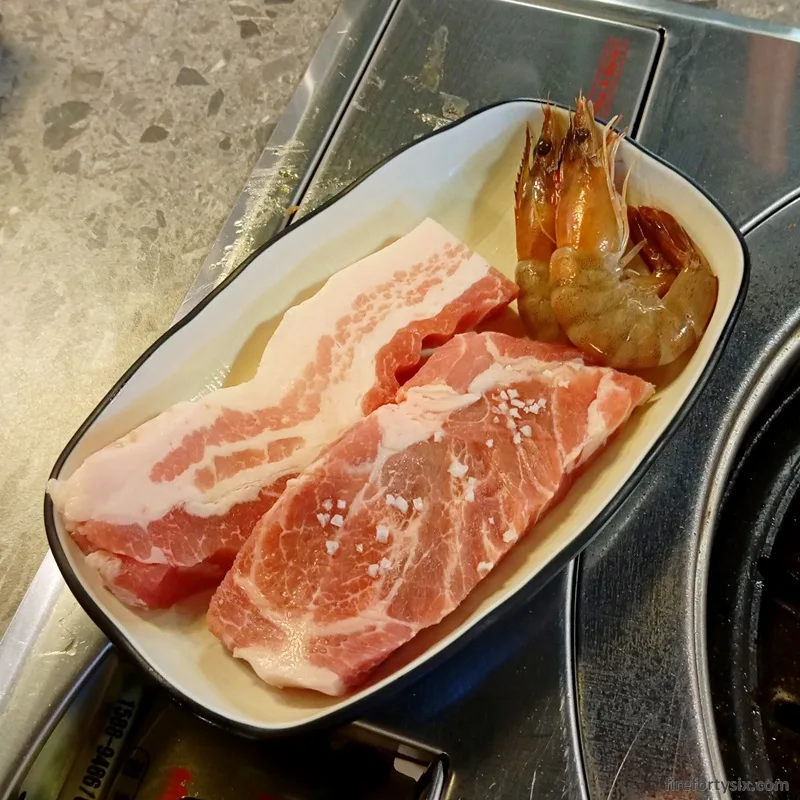
The prawns were meh and the pork belly was, as you can tell from the photo above, way too fatty. It was close to 80% fat and 20% meat.
Somewhat better was the pork collar and we would have ordered another portion. That is, if we still had room in our stomachs.
Our unanimous verdict was to just stick with the eel, and keep going until you can’t anymore. If you’re a fan of grilled eels, then the ones at Pohang Seafood are definitely worth a try.
Note that our visit was about two months ago, so I’m not sure if they’ve wiped out their entire supply yet. Best to give them a call first to check, and maybe they have a couple of Moo Deng’s worth of eels left.
